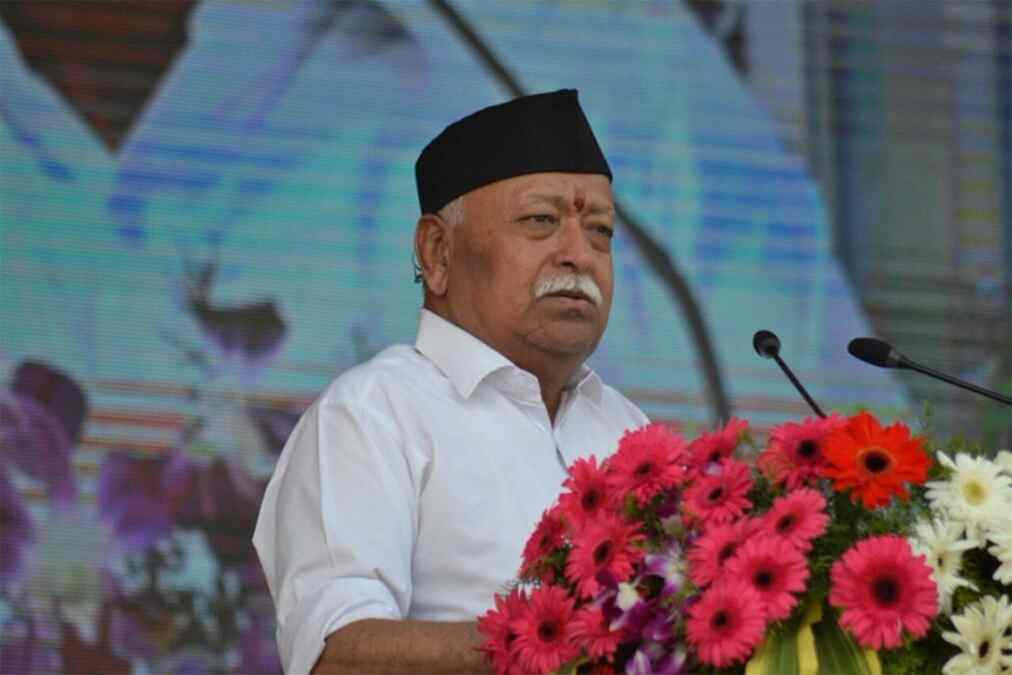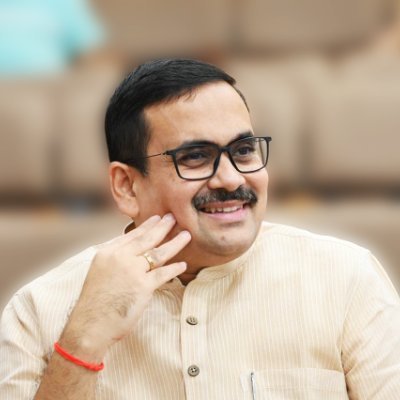Misinterpretation of Mohan Bhagwat’s Vijay Dashmi address undermines Sangh’s core concern of protecting India from the efforts to disintegrate her
Shri Guru ji Golwalkar, second Sarsanghchalak of Rashtriya Swayamsevak Sangh, was often asked by people, “If the RSS is not a political body why do you comment on political issues.” His candid reply was that the Sangh “has no interest in capturing power, but it is in our sacred duty to express ourselves on policies that affect the country’s security, cultural unity and self-respect.”
It was the Sangh’s inherent founding ideal of protecting Bharat, working for rejuvenating and strengthening her cultural unity, of watering her cultural roots and expanding her cultural dimension, of making her pre-eminent in the comity of nations by restoring her self-respect, that has driven the Sangh, through many adversities, to stick to national service and strive to counter multiple challenges that have hit India over the last seven odd decades. For many who disintegrate and deconstruct India narrative, peddlers and schemers, the Sangh’s continued existence is anathema, they see it as a bulwark against their design of final disintegration of India.
For nearly a century that it has been in dynamic existence, the Sangh has resolutely stuck to its mission of protecting and furthering India’s national interest, security and unity and standing up against forces of national disintegration. It has deliberated on issues and policies and has regularly articulated its stand over the decades. In fact, Shri Guruji had often displayed a deep intuition and understanding of issues and global forces and had often predicted an event or a calamity long before it actually hit India. His repeated warnings on an impending Chinese invasion, a decade before it actually hit India and shattered Nehru’s conjured philosophy of peaceful co-existence, his exhortations on the need to develop strong borders, his insistence on mainstreaming India’s Northeast and many other such instances displayed his keen understanding of what constituted India’s security paradigm and his understanding of the various forces at work to destabilise her and retard her rise.
Sarsanghchalak Mohan Bhagwat’s address this year too focused on such fundamental issues. He spoke of forces and foisted narratives that are at work to disintegrate India and pose a challenge to her unity, he referred to those dimensions that unite and strengthen national cohesion, he articulated the Sangh’s philosophy and its approach to national work through a constructive, creative and continuous response to these nefarious forces and enumerated the Sangh’s affirmative societal action in addressing these challenges.
It is the sensationalism hunters and analysts with a reductionist understanding of the Sangh’s tradition who have either criticized the Sarsanghchalak’s Vijaya Dashami address or have habitually misinterpreted it. Criticism and misinterpretation of the Sarsanghchalak’s address, his interactions and utterances, have a wide and lucrative market both in India and abroad. Many have built up their careers on doing this and have emerged as India “experts” in their respective domains. Reactions to this year’s Vijay Dashami address were no exception. But to those who looked beyond the surface, Sarsanghchalak’s address had a crucial resonance and insight.
Sarsanghchalak’s point that the journey from “swadheenata” to “swatantrata”, that is the journey, the evolution of moving from independence towards an independent existence based on and upheld by indigenous models was far from over and was an ongoing one, that any ambiguity and confusion on the dimension of “Swa” – the larger national self, had to be countered, that the misinterpretation and propaganda against India was meant to confuse the world and India’s own citizens, essentially articulated the fundamental challenges, both extraneous and internal, that have raised their heads in this very crucial period of India’s national consolidation and rise. His emphasis on the need to regulate content on OTT platforms, its impact on children especially during the pandemic period and its uses by anti-national forces, the imperative of decimating drug trafficking networks, revenue from which are pumped into subversive activities, are cardinal challenges facing India today which have to be addressed resolutely and relentlessly. The massive crackdown on drug trafficking in Assam, the emphasis on border area development and on border security by the Modi government, demonstrate the centrality of the threat and the determination to deal with it.
Among the many issues that Sarsanghchalak raised was the need to enhance self-sufficiency and self-reliance in the field of defence production, accelerate emotional integration of the people of Jammu and Kashmir with the rest of the people of India, remain vigilant on the evolving links between China, Pakistan, Turkey and the Taliban. Sarsanghchalak’s reference on the managing of Hindu temples, his observation that Hindu samaj will have to decide on how they wish to manage and handle their temples and his reference to the need for a population policy that would place national interest above parochial interests, were significant.
The need to bring about a multi-dimensional reform in this approach was evident when he pointed out misappropriation of temple properties that have come to light, of how a non-discriminatory, ease of access, opportunity to see, worship God irrespective of caste and creed was still elusive in several cases and how reversing the exclusive appropriation of Hindu religious sites, that have happened for decades and centuries was also imperative. The need was to hand over the operation of Hindu temples to Hindu devotees, utilize temple wealth for the worship of deities and welfare of Hindus. In short, it was a call for creating a framework in which Hindu temples would once more become centres of socio-cultural life and would be run on the strength of Hindu society.
Referring to the various dimensions of the population issues, Sarsanghchalak pointed out that population issues needed to be addressed in line with natural resources and future requirements, that there was an uneven total fertility rate and child ratio across religious groups, that unabated infiltration from East Pakistan and Bangladesh had altered the demographic profiles of states like Assam and West Bengal leading to a high growth rate of Muslims, infiltrators were generating socio-religious tensions, by usurping rights of citizens in these states and becoming a heavy burden on resources. He also referred to the steep rise in population, in states such as Manipur and Arunachal Pradesh, which was leading to targeted religious conversion in these areas.
The Sangh’s stand and discussion of the population issue is not a new-fangled one. It has spoken of the need for a demographic balance for decades. Its national executive meet in Ranchi in 2015 had enumerated these challenges and had called for the need to “reformulate the National Population Policy keeping in view the availability of resources in the country, future needs and the problems of demographic imbalance and apply the same uniformly to all.” It had also called for completely curbing “illegal infiltration from across the border”, spoke of the need to “prepare a National Register of Citizens and [to] prevent these infiltrators from acquiring citizenship rights and purchasing land.” The challenges of the population issue were frankly and starkly elaborated. This must necessarily lead to a comprehensive national discussion, a discussion which must have India’s future and welfare in mind.
Sarsanghchalak’s Vijaya Dashami address instilled hope, flagged the challenges and also laid out a roadmap of affirmative action with India as the centre and as the focus. To those who don’t have the India-first compass to lead them, who do not have India as the centre and focus of their action, who have been functioning as satellites and mouthpieces of foreign ideologies and political interests, Dr Mohan Bhagwat’s address will naturally come across as problematic and unsettling.
(The writer is a member of National Executive Committee (NEC), BJP, and the Hony. Director of Dr Syama Prasad Mookerjee Research Foundation. Views expressed are personal.)
This article was published in Millenium Post on 21st October 2021
(The views expressed are the author's own and do not necessarily reflect the position of the organisation)


